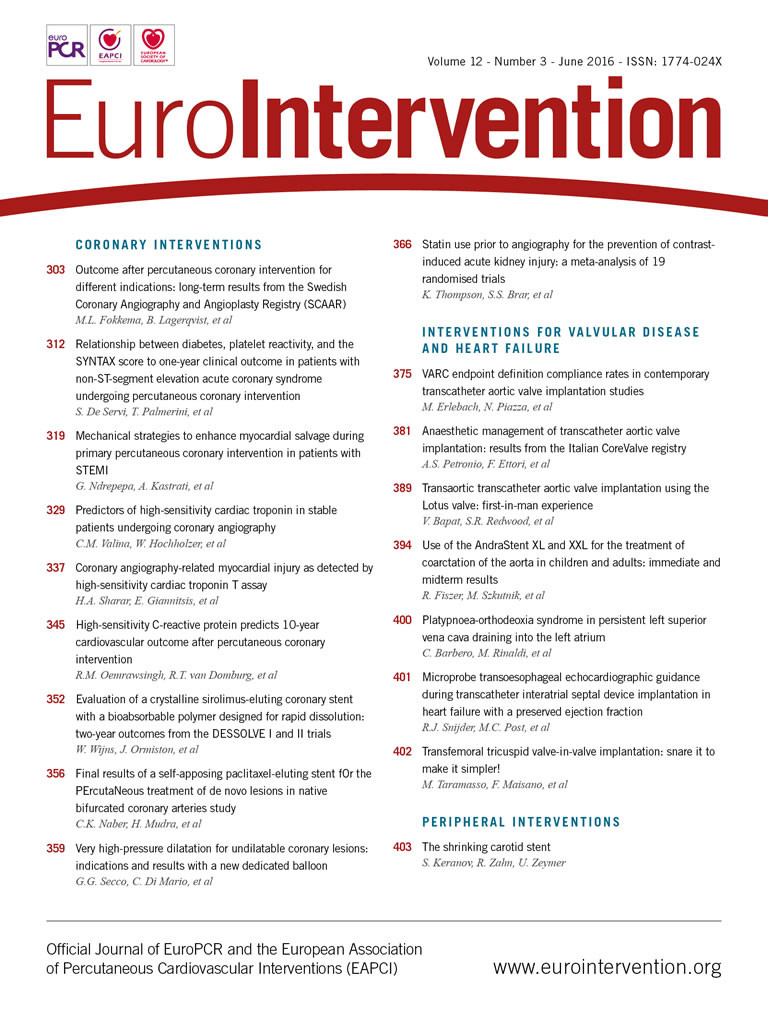
The “universal” definition of myocardial infarction (MI) is based on two key pillars: a clinical setting consistent with acute myocardial ischaemia, and evidence of cardiomyocyte necrosis, demonstrated by a rise and/or fall of cardiac troponins into the circulation with at least one value above the 99th percentile upper reference limit (URL99)1. The accuracy of this diagnosis in patients presenting with acute chest pain has been largely improved over the last decade through the development of so-called “high-sensitivity” troponin assays, which enable the detection and quantification of very low troponin concentrations2. However, the usefulness of the “universal” definition of MI to monitor the global cardiovascular disease epidemic has been challenged, since troponin has contributed little to a more reliable estimate of coronary mortality on a population level3. Furthermore, the fifth-generation high-sensitivity troponin assays also allow detection of troponin levels in individuals without ischaemic chest pain, including the general population, which complicates its interpretation. Indeed, in the MORGAM cohort, a general middle-aged European population, 75% of subjects had high-sensitivity troponin I (hsTnI) concentrations above the limit of detection, and 25% had levels above the URL994, the cut-off usually used for diagnosis of MI1.
The clinical relevance of these troponin “bumps” was addressed in a recent study by the BARI investigators, who demonstrated the prognostic importance of serum levels above the URL99 in patients with stable coronary heart disease (CHD) and diabetes5. The 40% of individuals with a high-sensitivity troponin T (hsTnT) above the URL99 had a 1.85 times higher risk of death from cardiovascular disease, MI or stroke than their counterparts with hsTnT levels below that limit5. The prognostic value of hsTnT was also demonstrated in individuals from the general population without cardiovascular disease who participated in the ARIC study6. Subjects with an hsTnT above the URL99 had a 2.29 times higher incidence of CHD than those with lower values. The relation between hsTnT levels and CHD was gradual, and even minimally elevated levels were associated with increased risk. The ARIC findings were largely confirmed in the MORGAM Biomarker Project Scottish Cohort4, among other studies.
Now that the prognostic value of (even very) low troponin concentrations has been established, in this issue of EuroIntervention, Drs Valina, Hochholzer and colleagues address the question of their determinants. In a retrospective analysis of the observational EXCELSIOR trial, they assess the relation between clinical, echocardiographic as well as angiographic factors and hsTnT values in stable patients undergoing elective coronary angiography7. Fifteen percent of the patients presented with an hsTnT level above the URL99, whereas obstructive CHD was absent in 20% of these cases. A variety of factors were significantly associated with hsTnT levels, but the associations were not particularly strong. Specifically, men, elderly subjects, those with impaired renal or left ventricular function, and diabetic patients had higher hsTnT levels than their counterparts. Interestingly, coronary status was not among the main determinants. This study is an extension of earlier work by Dr Irfan and colleagues on determinants of hsTnT in subjects with non-cardiac chest pain8.
In that study, Irfan et al concluded that unknown or underestimated cardiac involvement “seems to be the major cause of elevated hsTnT”8. The results which are described in this issue by Valina et al support that notion, and connect to invasive imaging studies. The landmark PROSPECT study demonstrated that plaque burden, necrotic core and calcium content increase significantly with aging, whereas gender differences are likely in younger patients9. In the AtheroRemo-IVUS study, high-risk coronary plaque features, as well as plaque volume in a non-culprit coronary artery, were significantly associated with elevated hsTnT levels >URL99 in patients with stable CHD10, as well as with adverse cardiac outcomes11. Hence, subclinical plaque rupture or erosion of non-flow-limiting stenosis, with distal embolisation of thrombotic material, and subsequent obstruction of the microvasculature and cardiomyocyte loss may be hypothesised as one of the underlying pathophysiological mechanisms of the observed troponin levels in these apparently stable patients.
Future studies are needed to unravel these mechanisms further. These studies should, ideally, involve (non-)invasive imaging and a broad spectrum of serum biomarkers. Apart from hsTnT as a marker of myocardial necrosis, biomarkers of vascular inflammation, coagulation, fibrosis, and even left ventricular function should be considered, while the temporal evolution of these markers during longer-term follow-up also needs to be addressed.
Elevated troponin levels, even when just above the limit of detection, are associated with adverse cardiac outcomes in stable populations with and without clinically established cardiovascular disease4-6. However, the identification of high-risk individuals is only a first step on the path towards the development of a policy aimed at risk reduction. We are still far from such an evidence-based strategy. First, further studies are required to gain more insight into the pathophysiological mechanisms involved in the troponin elevations in stable subjects. Second, clinical trials are needed to establish the cost-effectiveness of systematic troponin screening and subsequent pharmacological or mechanical interventions in these populations.
Conflict of interest statement
The authors have no conflicts of interest to declare.

